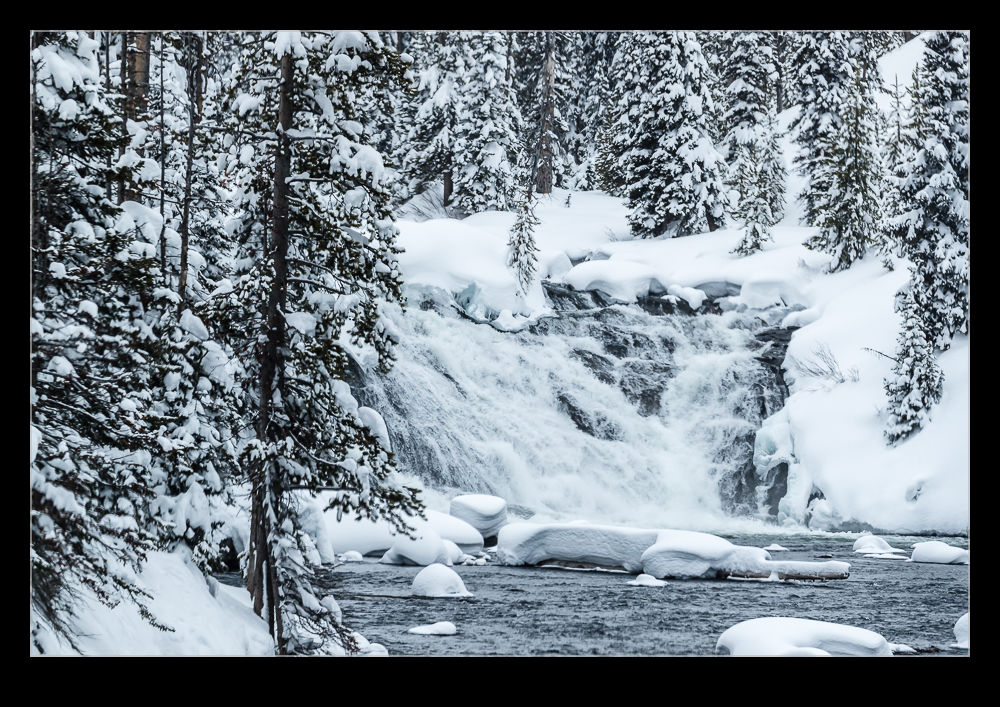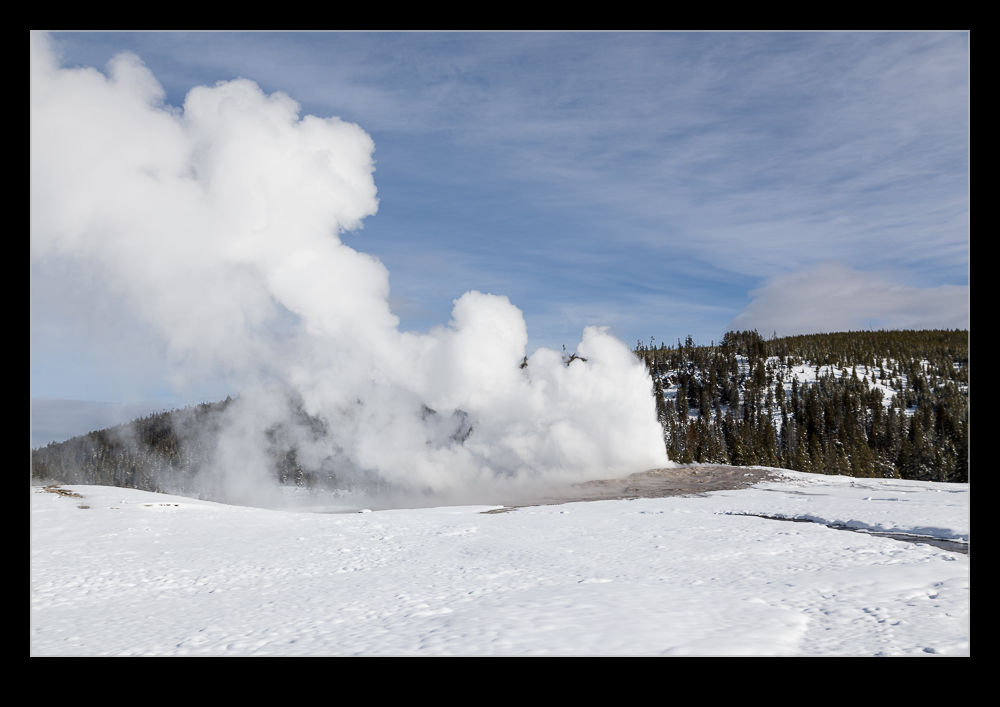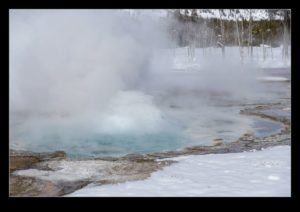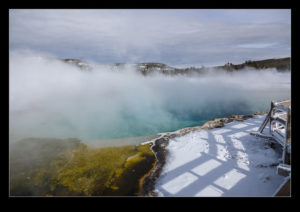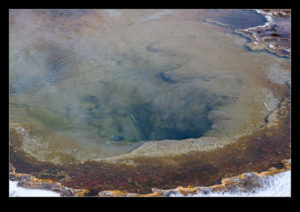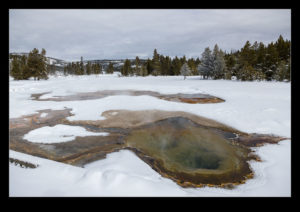 We stopped off at the Lewis Falls on the way out of Yellowstone. The angle of the falls from the road meant I had not even noticed them when we drove into the park but, coming back south, they were easily seen ahead and off to the right of the road. Temperatures were not so low that the falls were frozen up and they looked very pretty. Given the number of vehicles in the area, everyone was stopping to take a look too.
We stopped off at the Lewis Falls on the way out of Yellowstone. The angle of the falls from the road meant I had not even noticed them when we drove into the park but, coming back south, they were easily seen ahead and off to the right of the road. Temperatures were not so low that the falls were frozen up and they looked very pretty. Given the number of vehicles in the area, everyone was stopping to take a look too.
Tag Archives: national park
Steamy Old Faithful
 We had visited Old Faithful on a previous trip to Yellowstone and had stayed near the falls. Therefore, I was not so desperate to see the geyser again. However, in the middle of winter, things are a lot quieter than during peak season so it was quite interesting to be there with so few people around. The geyser erupted not long after we arrived. It was quite a different experience. The low air temperatures meant that the hot water produced a lot of steam as soon as it emerged. The clouds of steam drifted downwind but they concealed the flow of water to some extent. Still, it was an impressive sight to witness and even better on a crystal clear day.
We had visited Old Faithful on a previous trip to Yellowstone and had stayed near the falls. Therefore, I was not so desperate to see the geyser again. However, in the middle of winter, things are a lot quieter than during peak season so it was quite interesting to be there with so few people around. The geyser erupted not long after we arrived. It was quite a different experience. The low air temperatures meant that the hot water produced a lot of steam as soon as it emerged. The clouds of steam drifted downwind but they concealed the flow of water to some extent. Still, it was an impressive sight to witness and even better on a crystal clear day.
Hot Pools Hide Themselves
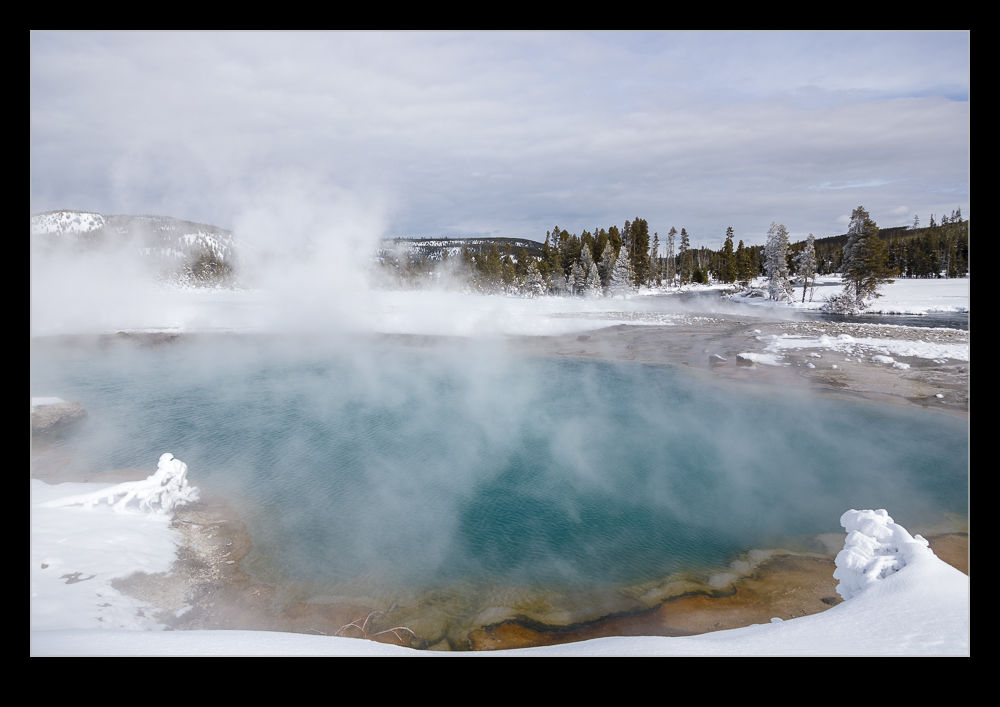 The colorful pools of hot springs in Yellowstone can be quite stunning to see. Visiting in the deep of winter means they are surrounded with snow and ice but a lot less people. The colors are still there but the low temperatures mean that clouds of steam form above the surface. Gentle gusts of wind might briefly blow the steam away to reveal the intense colors beneath but the steam rapidly returns. As you look into the pools you can see the colors well but it makes for a harder time getting photographs. You give it a try but then just spend time enjoying the impressiveness of the pools.
The colorful pools of hot springs in Yellowstone can be quite stunning to see. Visiting in the deep of winter means they are surrounded with snow and ice but a lot less people. The colors are still there but the low temperatures mean that clouds of steam form above the surface. Gentle gusts of wind might briefly blow the steam away to reveal the intense colors beneath but the steam rapidly returns. As you look into the pools you can see the colors well but it makes for a harder time getting photographs. You give it a try but then just spend time enjoying the impressiveness of the pools.
Mesa Arch at Canyonlands
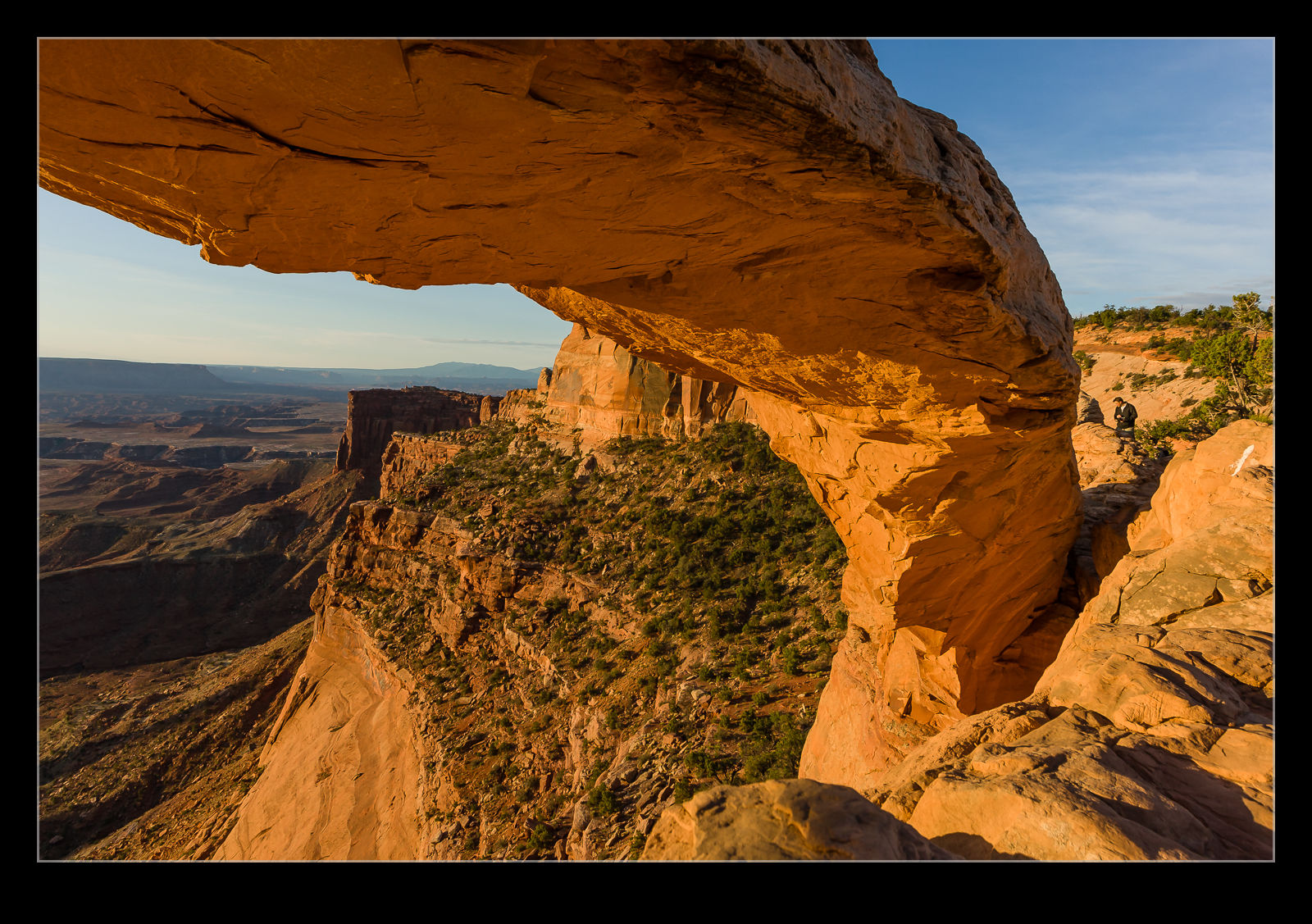
I was watching a YouTube video recently where they discussed photographing Mesa Arch in Canyonlands. This is one of my shots from my visit there and, while I had some similar experiences to the guys on YouTube, I also had a great overall experience.Mesa Arch is famous for the sun rising through the arch. I wanted to be there for that so an early start was required. Getting there requires a reasonable drive from Moab but we were staying a bit outside Moab anyway so we had a longer drive. I wanted to get there in plenty of time so we started out very early.

As we drove into Canyonlands, I could see some large taillights ahead of me. It looked like a coach and where else would it be going at this time of the morning. Sure enough, we followed it in to the parking lot near the arch. The coach disgorged a group of tourists from Japan and we followed them up the trail.
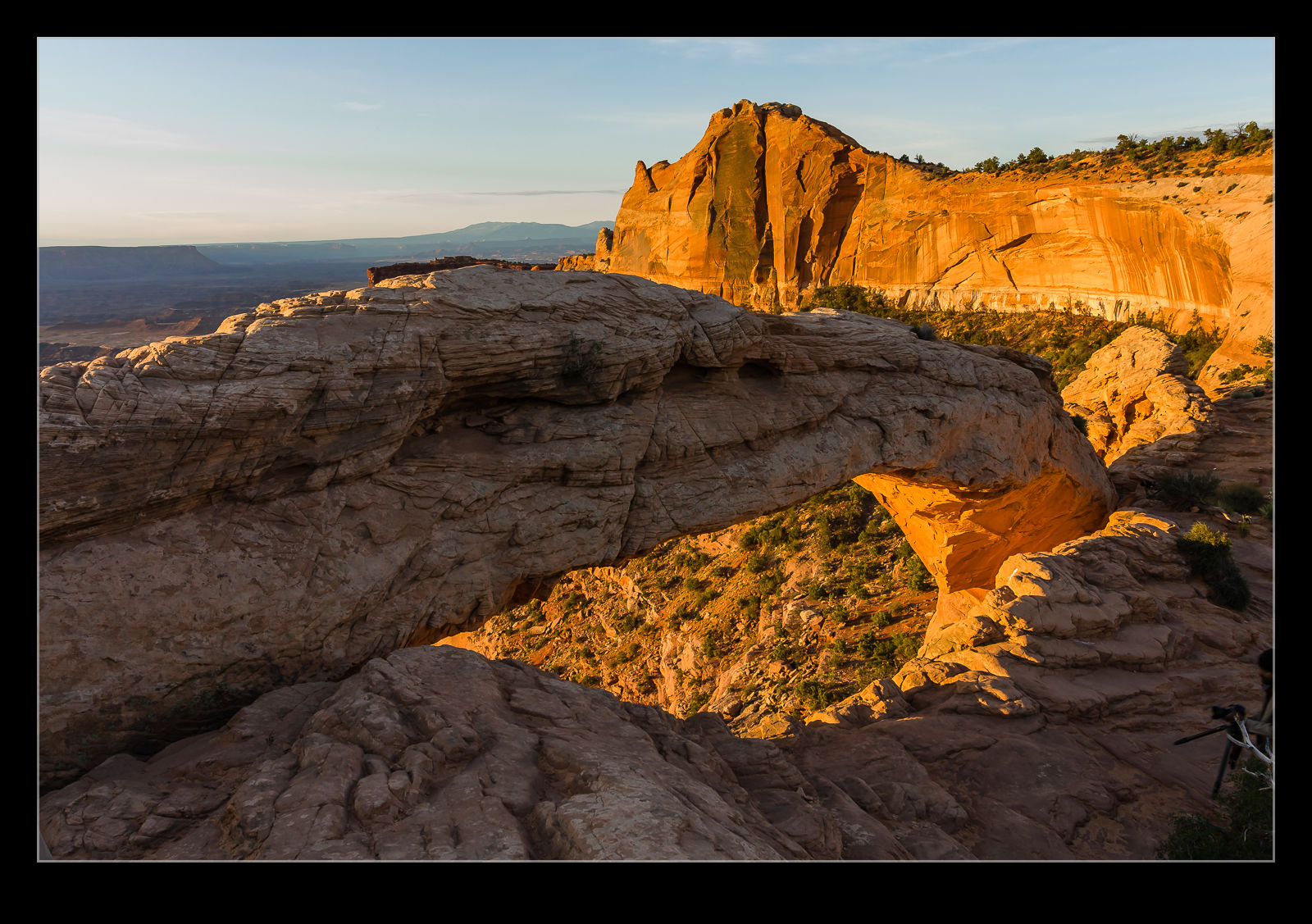
At the arch itself, a ton of people were lined up directly in front of the arch. We decided to hold back a short distance and see how things played out. Everyone was waiting for the sun to appear over the horizon. The good thing about shooting landscapes instead of aircraft is you know what time things will happen. Sunrise is never late and, while it might be overcast, the sun doesn’t go tech. Up it popped. What followed was quite funny. There was the sound of lots of shutters clicking as soon as the sun popped up. I’m sure it wasn’t immediate but it then felt like everyone turned and walked away. About fifteen minutes later there were probably half a dozen of us with cameras and tripods left alone. The group worked well together moving around and giving each other space and time.
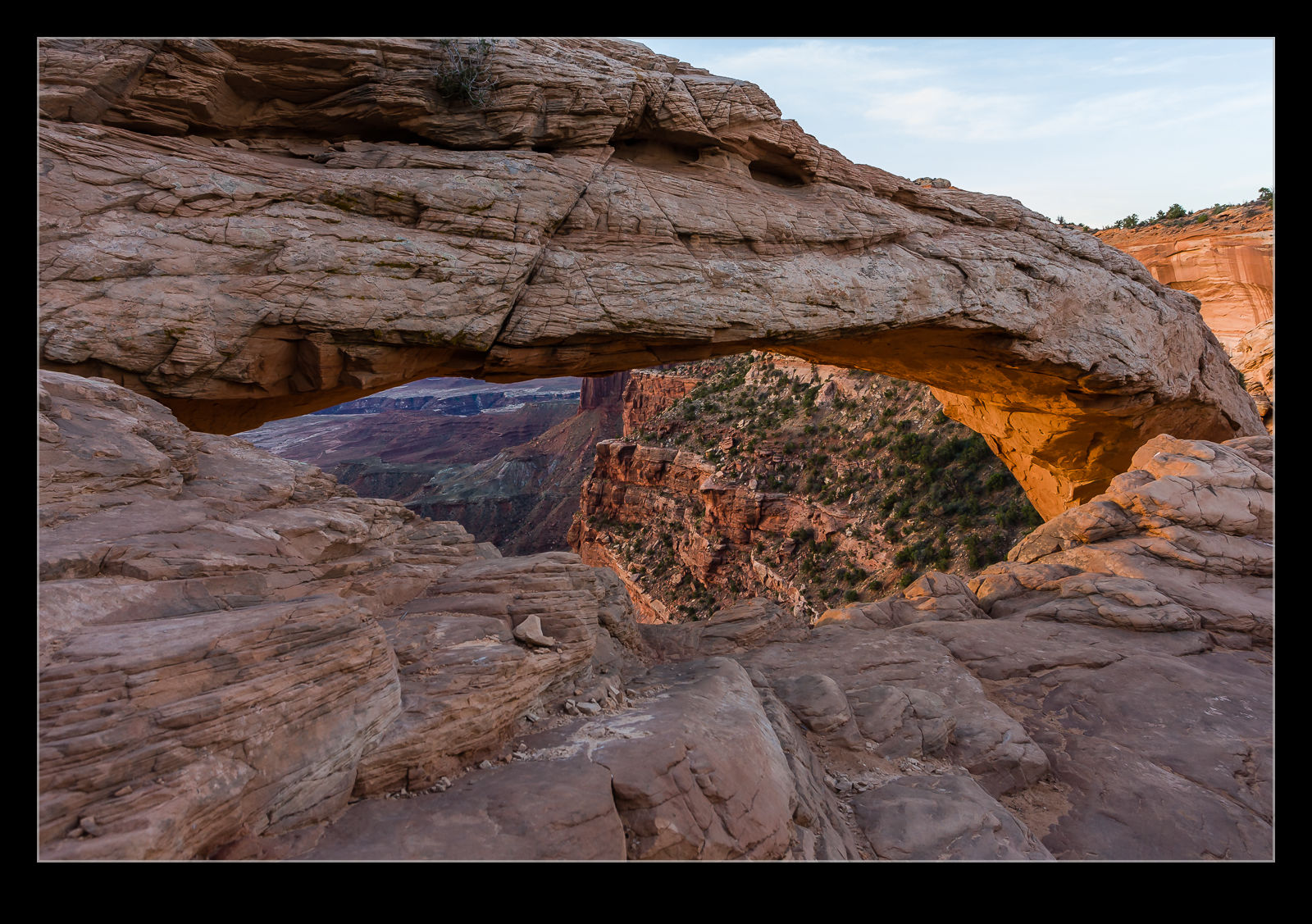
Here is the best bit. The sunrise was okay but nothing special. However, after about fifteen to twenty minutes, the light started to really illuminate the rock surfaces around us. The walls and the underside of the arch were glowing. It was infinitely better than when the sun came up and hardly anybody that had trekked out early that morning saw it. They had all gone. Those of us that remained had a great time. If you ever go to Canyonlands, be patient!
Nike Missile Battery
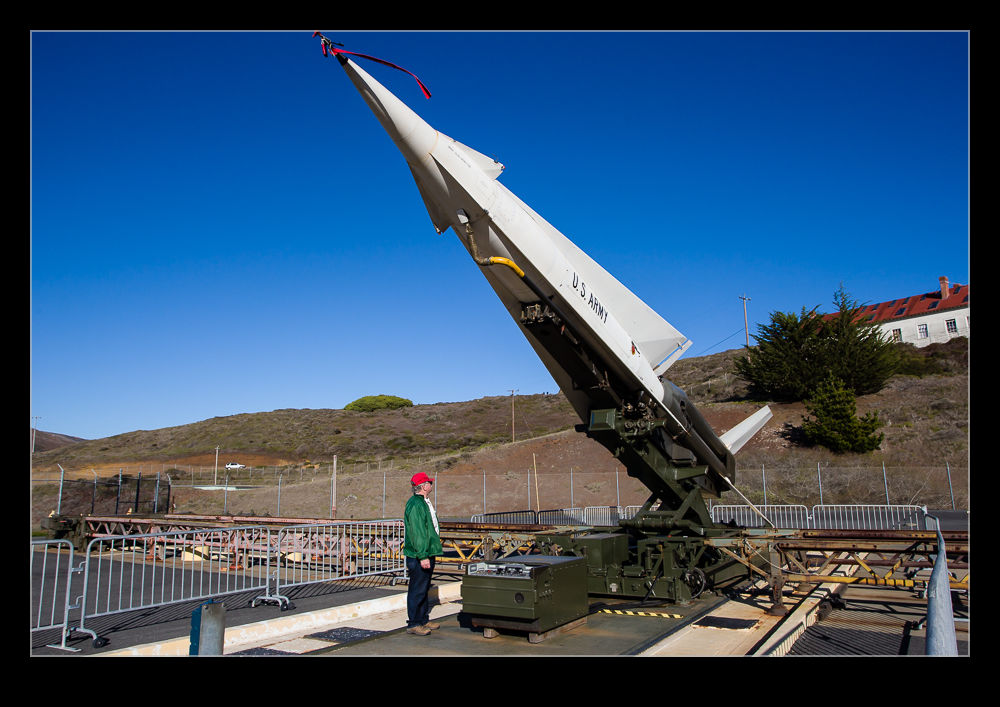 At the height of the cold war, the possibility of large waves of Soviet bombers attacking the United States was considered high. Defending the major cities and defense installations was a high priority. The result was one of (if not the) most expensive defense programs ever. The Nike missile program was an air defense system developed by the US Army. Intended to replace the anti-aircraft gun batteries that were considered incapable of defending against jet aircraft, the goal of Nike was to take out incoming aircraft before they were able to drop thermonuclear weapons on the US. Since the range at which nuclear weapons could cause devastation was high, interception far away from the target was the goal.
At the height of the cold war, the possibility of large waves of Soviet bombers attacking the United States was considered high. Defending the major cities and defense installations was a high priority. The result was one of (if not the) most expensive defense programs ever. The Nike missile program was an air defense system developed by the US Army. Intended to replace the anti-aircraft gun batteries that were considered incapable of defending against jet aircraft, the goal of Nike was to take out incoming aircraft before they were able to drop thermonuclear weapons on the US. Since the range at which nuclear weapons could cause devastation was high, interception far away from the target was the goal.
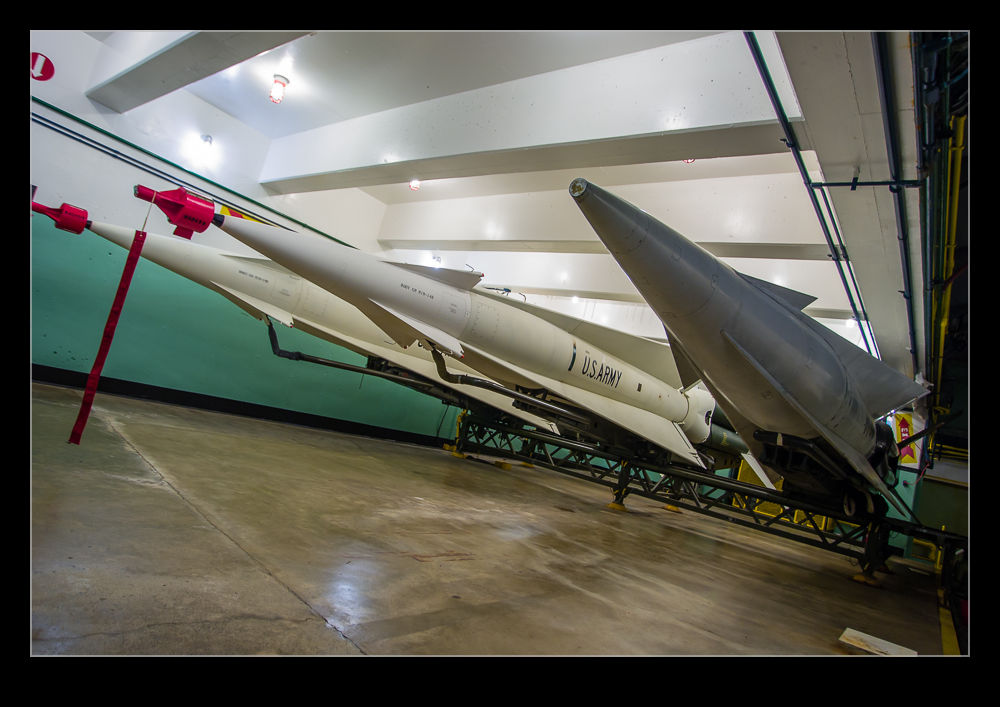 Several different missiles were developed as part of the Nike system. Two if these missiles were the Ajax and the Hercules. Ajax was the first of these two to be developed. It introduced analog computing and tracking of both the target and the missile with the aim of bringing the missile to a successful interception. The range of Ajax was relatively limited and large number of batteries was deployed around the major cities and defense installations.
Several different missiles were developed as part of the Nike system. Two if these missiles were the Ajax and the Hercules. Ajax was the first of these two to be developed. It introduced analog computing and tracking of both the target and the missile with the aim of bringing the missile to a successful interception. The range of Ajax was relatively limited and large number of batteries was deployed around the major cities and defense installations.
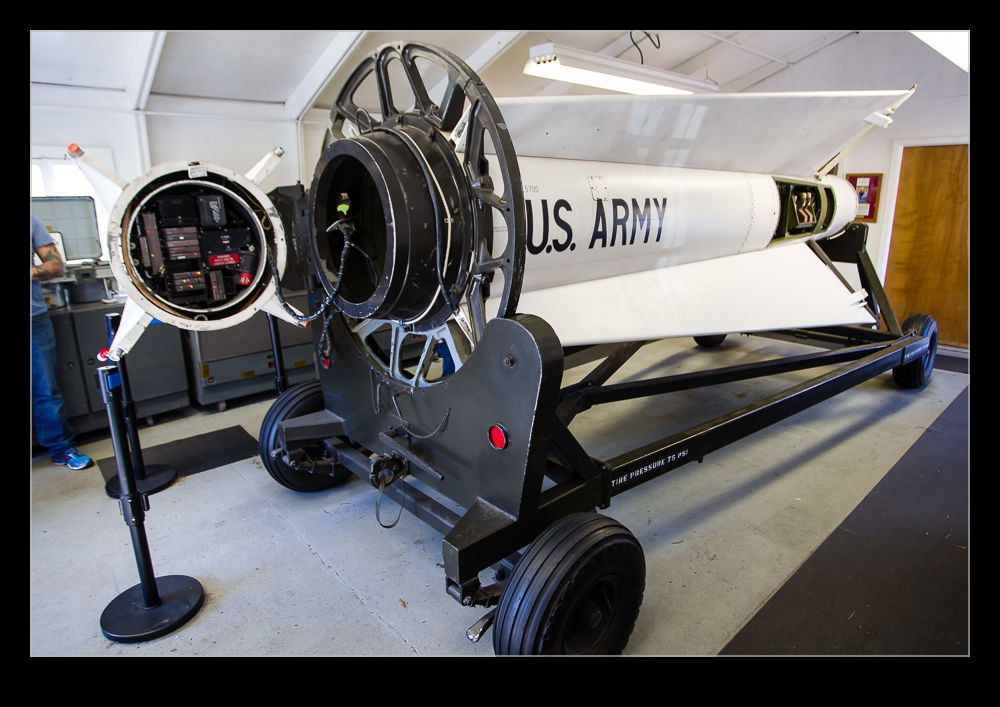 Meanwhile, the Hercules missile was undergoing development. It introduced a far larger booster (actually four of the Ajax boosters strapped together), a larger sustainer motor and new warheads including conventional and nuclear options. The longer range and greater intercept capability of the system meant that fewer batteries were required to achieve coverage and they could be slightly further out from the area being protected. With a range of approximately 100 miles, the Hercules missile could reach its target in approximately 90 seconds. The enormous booster gave it a phenomenal acceleration. By the time the tail of the booster reached the point where the tip of the missile had been on the launcher, the missile was already supersonic.
Meanwhile, the Hercules missile was undergoing development. It introduced a far larger booster (actually four of the Ajax boosters strapped together), a larger sustainer motor and new warheads including conventional and nuclear options. The longer range and greater intercept capability of the system meant that fewer batteries were required to achieve coverage and they could be slightly further out from the area being protected. With a range of approximately 100 miles, the Hercules missile could reach its target in approximately 90 seconds. The enormous booster gave it a phenomenal acceleration. By the time the tail of the booster reached the point where the tip of the missile had been on the launcher, the missile was already supersonic.
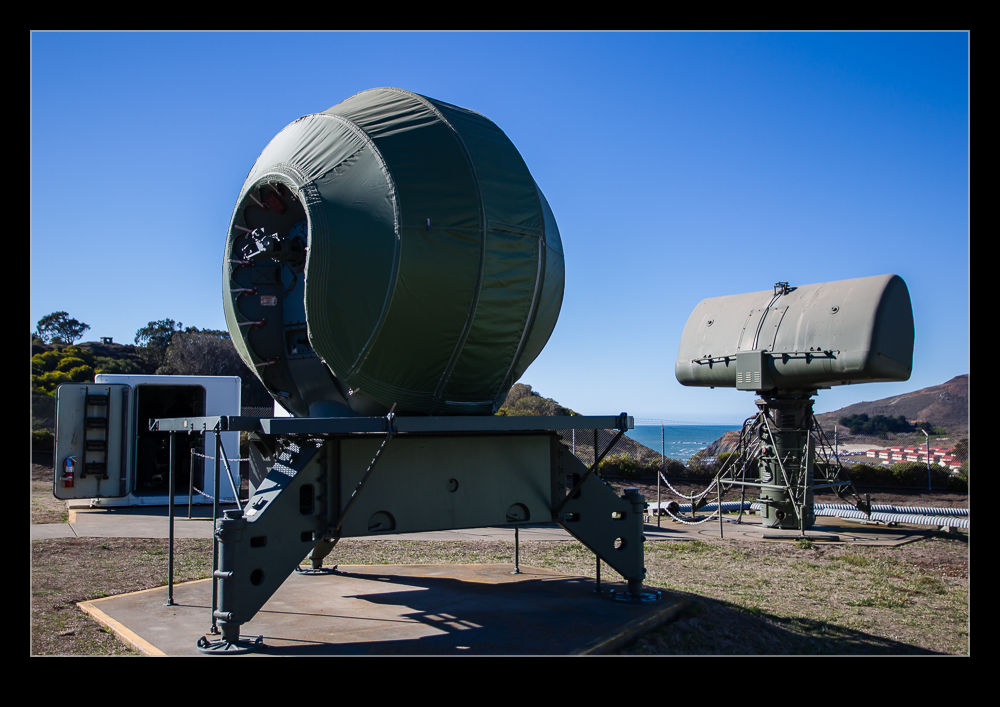 While Hercules had a notional capability against ballistic missiles, the move away from bombers meant the system was more vulnerable a technology advanced. Ultimately, as part of arms limitation treaties, it was decommissioned as part of the anti-ballistic missile systems. While hundreds of installations had once been in service across the United States and other countries, virtually nothing of them now remains.
While Hercules had a notional capability against ballistic missiles, the move away from bombers meant the system was more vulnerable a technology advanced. Ultimately, as part of arms limitation treaties, it was decommissioned as part of the anti-ballistic missile systems. While hundreds of installations had once been in service across the United States and other countries, virtually nothing of them now remains.
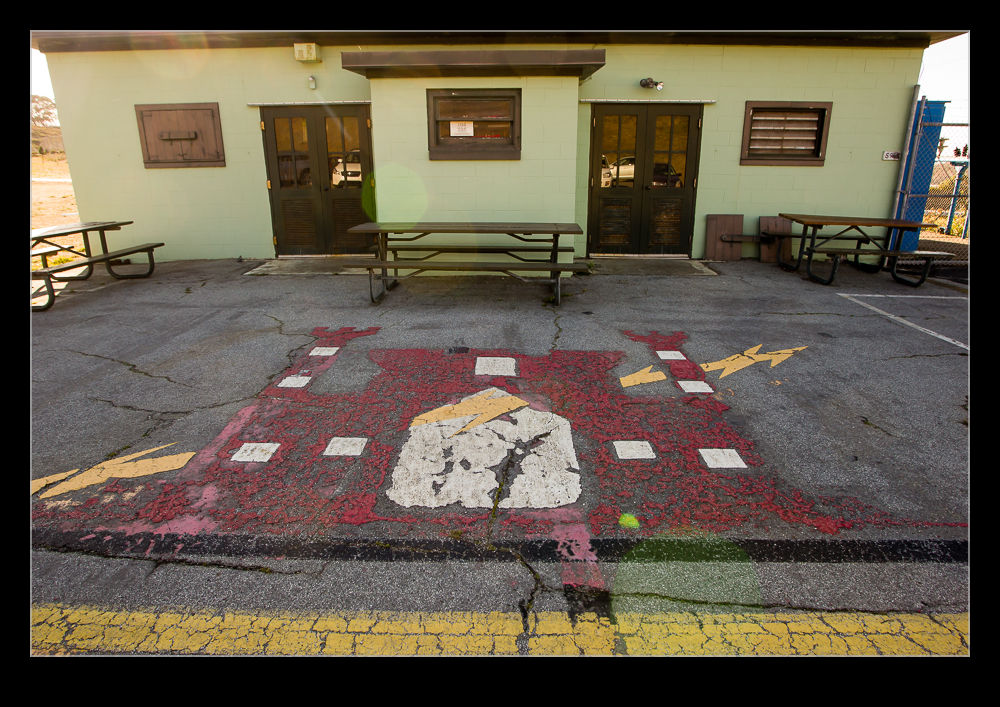 The only relatively intact location is just outside San Francisco on the Marin Headlands. Located in a National Park, SF-88 opens to the public most Saturdays. The last of over a dozen installations in the San Francisco area, it has preserved the core infrastructure of the installation even if it is condensed into a smaller area that was the case when it was operational. The facility has a search radar and a tracking radar on display. The search radar was used to identify the targets initially. Then two tracking radar were used to carry out the attack.
The only relatively intact location is just outside San Francisco on the Marin Headlands. Located in a National Park, SF-88 opens to the public most Saturdays. The last of over a dozen installations in the San Francisco area, it has preserved the core infrastructure of the installation even if it is condensed into a smaller area that was the case when it was operational. The facility has a search radar and a tracking radar on display. The search radar was used to identify the targets initially. Then two tracking radar were used to carry out the attack.
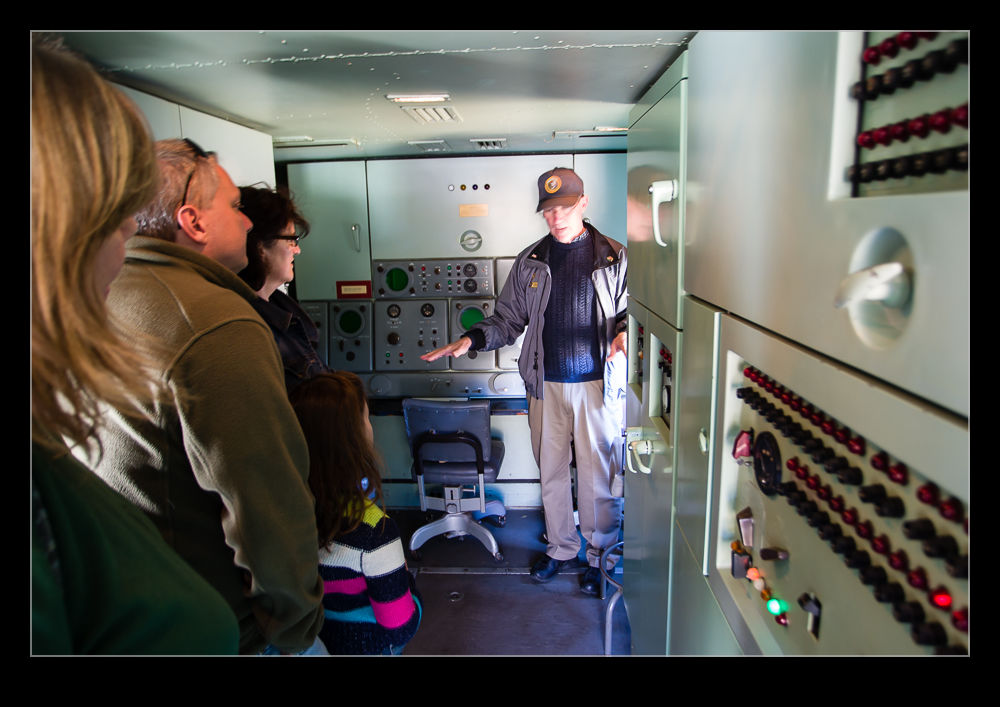 The first tracking radar would lock on to the target. The second would track the missile as it was outbound. The missile did not guide itself. It received command guidance from the ground. The two tracking radar would feed data to the analog computers that controlled the system. It would then determine the guidance parameters to be transmitted to the missile. The missile had four antennae on board – two to receive and two to transmit. It would then make course corrections based on the signals received. It would initially boost to very high altitude before arcing over and homing in on the target. The aim was to detonate just ahead of the target to either provide a cloud of fragments into which it would fly or, in the case of the nuclear warheads, to obliterate it. Even if the nuclear warhead detonated too far away to disable the aircraft, the electromagnetic pulse was considered likely to render the weapons inoperative.
The first tracking radar would lock on to the target. The second would track the missile as it was outbound. The missile did not guide itself. It received command guidance from the ground. The two tracking radar would feed data to the analog computers that controlled the system. It would then determine the guidance parameters to be transmitted to the missile. The missile had four antennae on board – two to receive and two to transmit. It would then make course corrections based on the signals received. It would initially boost to very high altitude before arcing over and homing in on the target. The aim was to detonate just ahead of the target to either provide a cloud of fragments into which it would fly or, in the case of the nuclear warheads, to obliterate it. Even if the nuclear warhead detonated too far away to disable the aircraft, the electromagnetic pulse was considered likely to render the weapons inoperative.
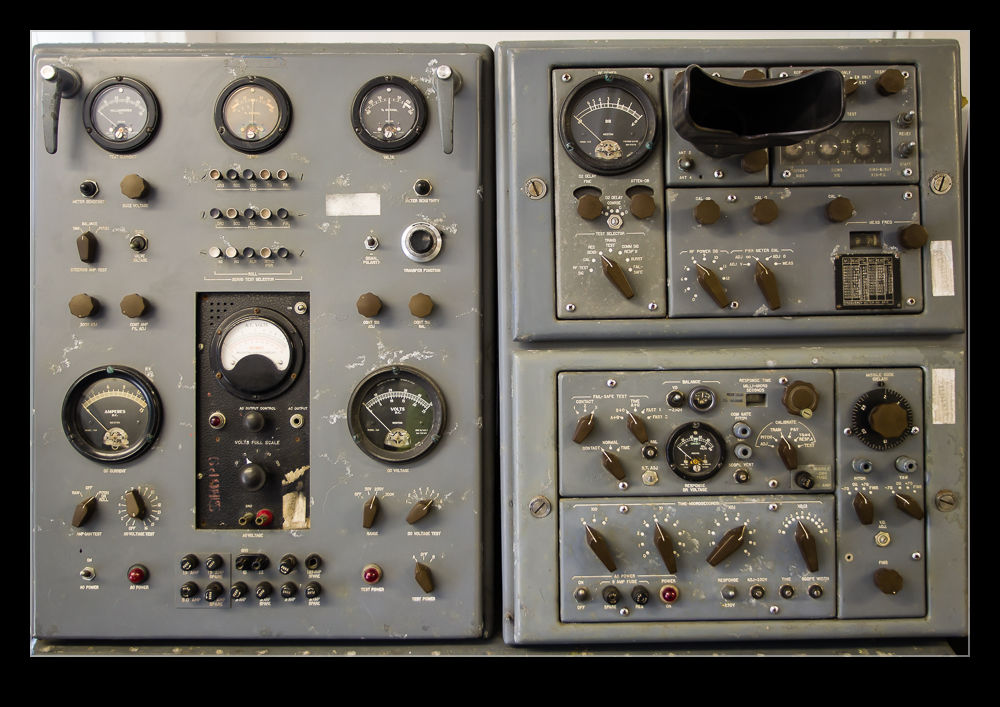 The control systems are on display in metal cabins above ground. These systems were considered mobile if required, hence them not being buried. The same was not the case for the missile bunkers. They are underground with hatches to the surface through which the missiles would be raised and lifted into the near vertical launch position. These facilities are still in place and the tour includes the chance to go underground, see a selection of Hercules missiles on the launch racks including one that is ready to lift. When the guide has finished providing an explanation of the missiles and their usage, a climb back up out of the bunker allows you to see the missile being raised up out of the ground and into its launch position.
The control systems are on display in metal cabins above ground. These systems were considered mobile if required, hence them not being buried. The same was not the case for the missile bunkers. They are underground with hatches to the surface through which the missiles would be raised and lifted into the near vertical launch position. These facilities are still in place and the tour includes the chance to go underground, see a selection of Hercules missiles on the launch racks including one that is ready to lift. When the guide has finished providing an explanation of the missiles and their usage, a climb back up out of the bunker allows you to see the missile being raised up out of the ground and into its launch position.
Only one missile could be fired at a time since the control system could only manage the tracking of one missile. However, four launchers were part of the battery so multiple engagements could take place and batteries elsewhere in the area could also engage. Once the missile had finished its flight, another could be loaded to go. However, the large booster did leave its mark. While it was scheduled to be jettisoned shortly after launch and to fall out to see, the intense heat could set fire to surrounding debris and the guides also talk about some falling propellant still burning as it came down. Not a good place to be. The sound of launch was also intense, even when in protected environments.
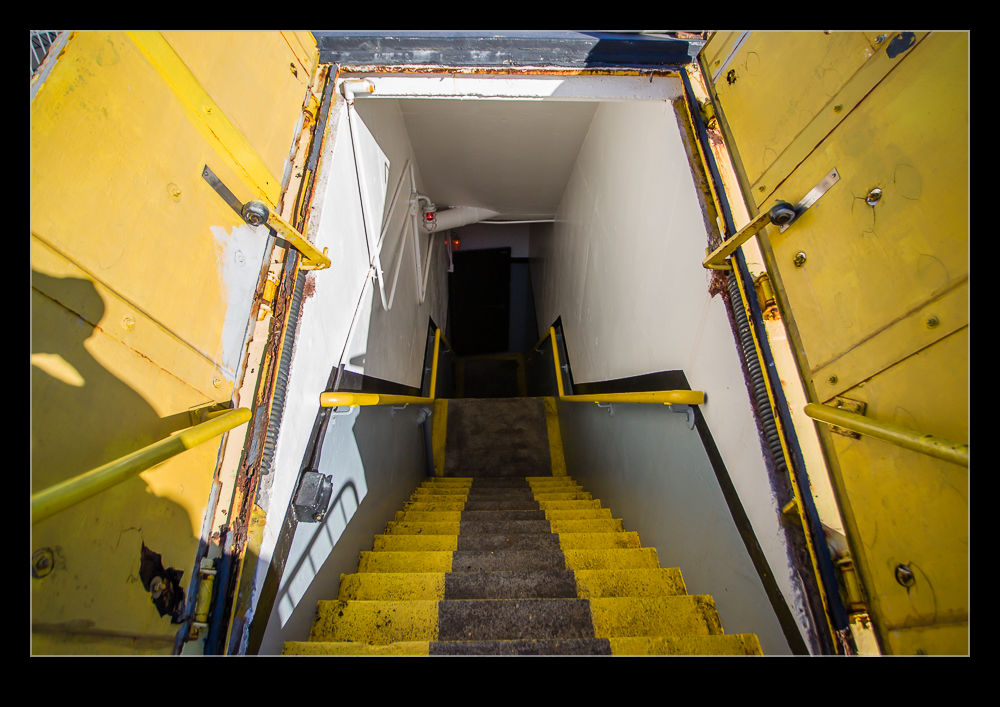 No launches ever took place within the United States of deployed missiles. However, regular launches were undertaken by crews for training. These were carried out at White Sands Missile Range with the crews deploying there periodically to practice actually firing the missile. These missiles obviously did not have the nuclear warheads but were aimed at incoming target drones, some examples of which are also part of the installation.
No launches ever took place within the United States of deployed missiles. However, regular launches were undertaken by crews for training. These were carried out at White Sands Missile Range with the crews deploying there periodically to practice actually firing the missile. These missiles obviously did not have the nuclear warheads but were aimed at incoming target drones, some examples of which are also part of the installation.
The Marin Headlands are full of military installations long retired. Gun batteries designed to protect the Bay Area from naval assault are common. However, the Nike Installation SF-88 is a unique example of some more modern weaponry that was located all around San Francisco with most people being totally unaware it was there. A visit to see this amazing place is well worthwhile if you are in the area.
